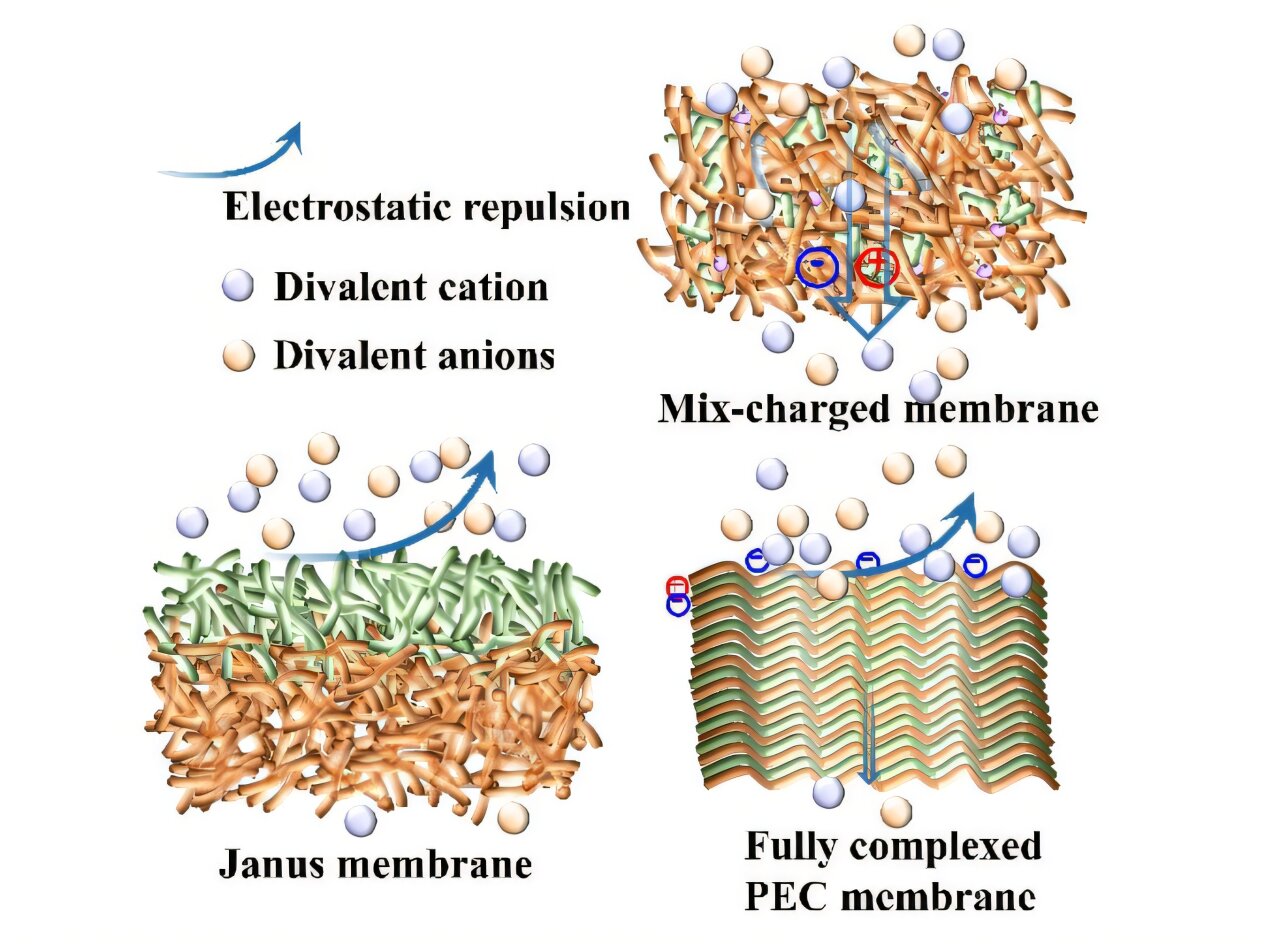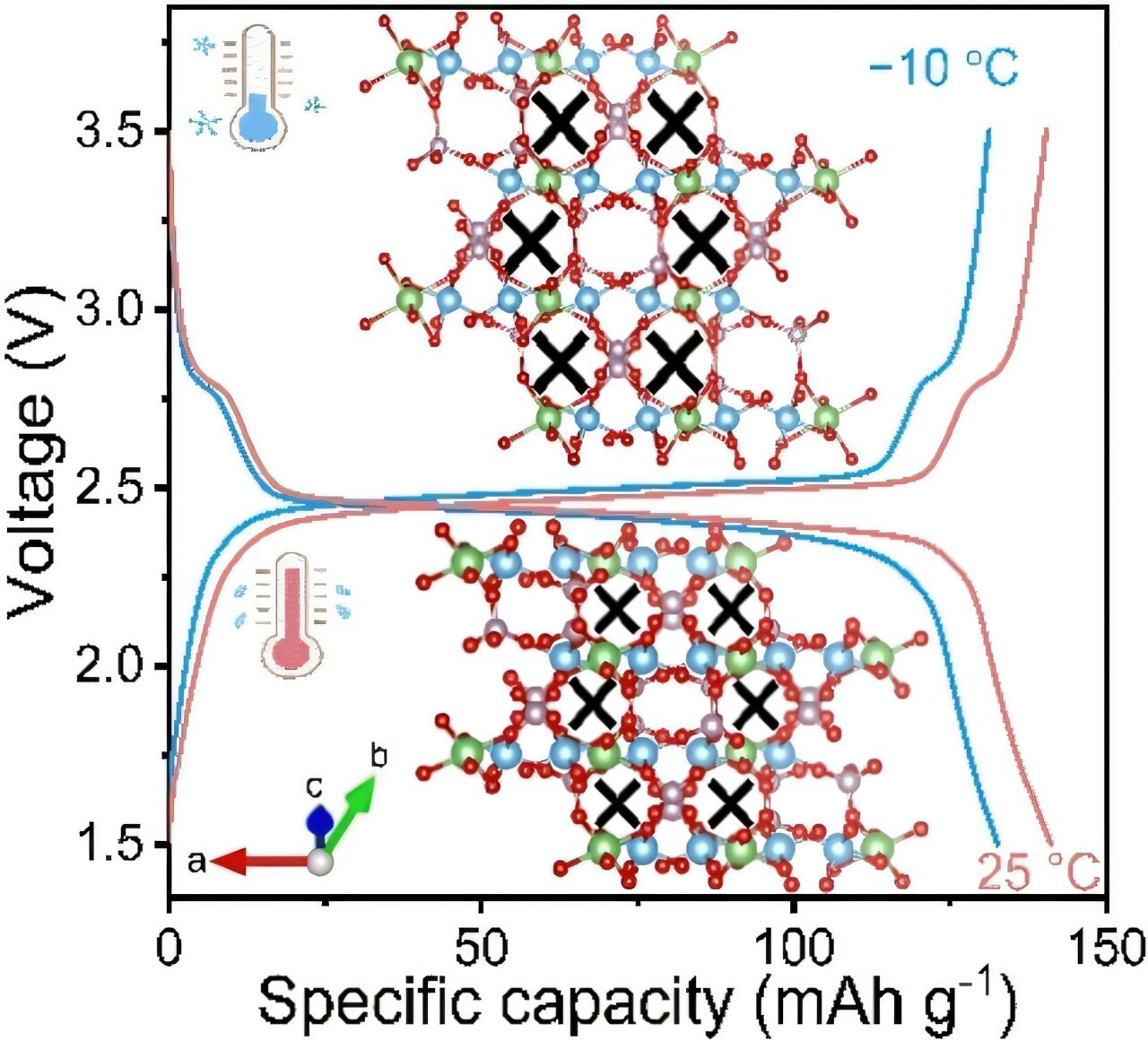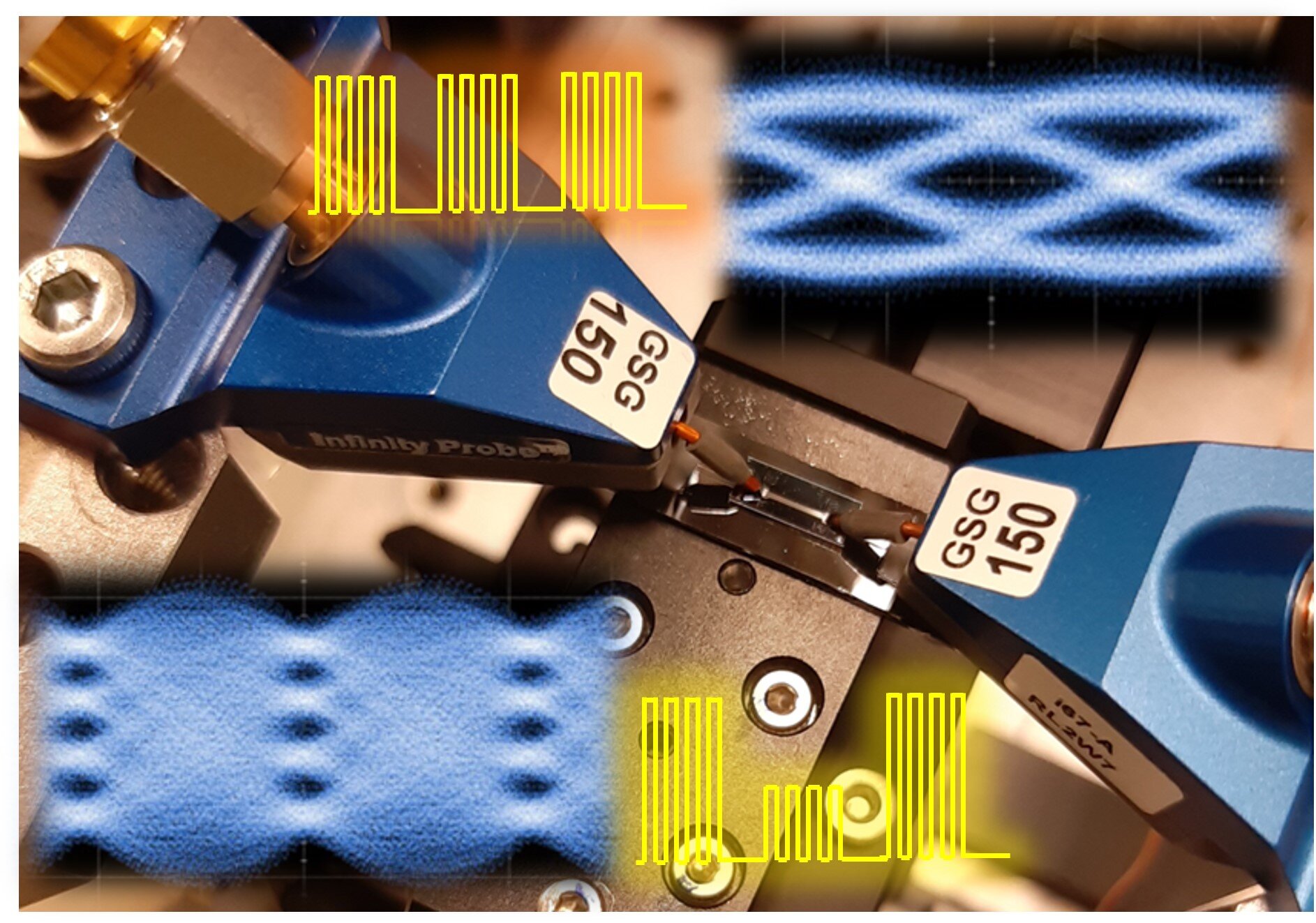A team of researchers led by Professor Wan Yinhua at the Institute of Process Engineering (IPE) of the Chinese Academy of Sciences has made a groundbreaking advance in the field of wastewater treatment. They developed an innovative mix-charged nanofiltration (NF) membrane featuring a unique horizontal charge distribution, designed specifically to handle high-salinity organic wastewater. The new membrane demonstrates exceptional salt permeation and organic matter retention while exhibiting remarkable antifouling properties. These findings were recently published in Environmental Science & Technology on January 7.
The treatment of high-salinity wastewater, which often contains significant amounts of organic contaminants, is a critical environmental and industrial challenge. Effectively removing these contaminants is essential to recover valuable resources and achieve the goal of zero-liquid discharge—an approach increasingly adopted to minimize environmental impacts. While conventional NF membranes are widely used due to their ability to separate organic compounds and monovalent salts, their performance is often limited. Most existing NF membranes tend to over-reject divalent salts, which can lead to inefficiencies in wastewater treatment processes.
To address this issue, the team aimed to modify the charge properties of NF membranes. Existing methods have attempted to enhance salt permeation by altering charge characteristics; however, the role of charge spatial distribution in influencing salt transport behavior has remained largely unexplored. Recognizing this knowledge gap, the researchers set out to design a new type of membrane with an optimized charge configuration.
The result of their efforts is a mix-charged NF membrane that features horizontal charge distribution. This unique membrane was developed using a combination of advanced fabrication techniques, including interfacial polymerization, polyester template etching, and solvent-induced polyamine intercalation. By manipulating these processes, the team created a membrane with a high charge density and a near-electroneutral surface. This configuration is instrumental in facilitating the transport of divalent salts, which are typically more difficult to permeate through conventional NF membranes.
Another crucial innovation in this membrane design is the “plug-in” size-dependent modification. By covalently crosslinking and reducing pore size, the researchers were able to enhance the rejection of small organic molecules. This dual-functionality—improved salt transport and selective organic rejection—offers a significant advantage in treating complex wastewater streams with both high salinity and organic content.
Additionally, the new membrane was found to have exceptional antifouling capabilities. Fouling is one of the biggest challenges in membrane-based wastewater treatment, as it can significantly reduce performance and increase maintenance costs. The membrane’s unique horizontal charge distribution and smooth surface contribute to its resistance to fouling from both positively and negatively charged pollutants. This antifouling property ensures more stable and efficient long-term operation.
The performance metrics of the newly developed membrane are striking. During tests involving high-salinity organic wastewater, the membrane achieved a salt permeation rate of 58.6% and a chemical oxygen demand (COD) rejection rate of 68.7%. These figures represent some of the best results ever reported for NF membranes in scientific literature, highlighting the potential of this technology to revolutionize wastewater treatment processes.
In discussing the breakthrough, Prof. Luo Jianquan, one of the study’s corresponding authors, emphasized the significance of these results. “Our membrane achieves performance levels that are not only impressive in the context of current NF technology but also indicative of the transformative potential it holds for high-salinity wastewater treatment. This development brings us closer to achieving more sustainable and efficient wastewater management.”
The implications of this research are far-reaching. High-salinity wastewater is generated in various industrial processes, including chemical manufacturing, petroleum refining, and food production. Its treatment is often challenging due to the need to remove both salts and organic pollutants while ensuring cost efficiency and environmental sustainability. The mix-charged NF membrane represents a new frontier in addressing these challenges, providing an innovative approach that combines high performance with durability and versatility.
Beyond its immediate applications, this technology aligns with global efforts to enhance sustainability in water management. Efficient wastewater treatment not only helps prevent environmental degradation but also supports the circular economy by enabling the recovery of valuable resources from waste streams. With further research and scaling, this membrane technology could pave the way for cleaner industrial processes and contribute significantly to water conservation efforts.
Reference: Yuling Ren et al, Mix-Charged Nanofiltration Membrane for Efficient Organic Removal from High-Salinity Wastewater: The Role of Charge Spatial Distribution, Environmental Science & Technology (2025). DOI: 10.1021/acs.est.4c10120











